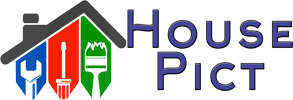From smart tools to prefabrication, the plumbing industry is experiencing revolutionary technology advances that are revolutionizing installation processes and driving efficiency and accuracy of installations.
Smart leak detection systems have enabled plumbers to resolve plumbing issues quickly without breaking walls, while smart circulation systems offer luxury homes a convenient and sustainable living solution.
Smart Tools
Technology-enhanced plumbing tools can save both homeowners money and time. For instance, using simple water conservation practices with these cutting-edge tools can conserve over 30,000 gallons per year! Furthermore, using such advanced tools allows plumbers to perform their work more accurately and efficiently.
Plumbers utilizing smart tools in the field typically need to calibrate them. A smart level, for instance, must be calibrated by placing it on a surface as close to plumb as possible and following its LCD’s calibration steps.
Plumbers frequently turn to drain and sewer inspection cameras as an indispensable tool in their toolboxes. Attached to flexible cables, these cameras can be inserted into pipes for a closer look at any obstructions obstructing their path. Featuring portability, HD video quality and long-life batteries as well as being rust proof and cost-effective systems; additionally they can help pinpoint leaks.
Prefabrication
Prefabricated construction has become more and more popular as a cost-saving, time-efficient, quality control option. Now that the construction industry is shifting toward sustainability and energy efficiency, prefabrication’s significance in shaping building’s future cannot be overstated.
Prefabrication allows builders to reduce costs by manufacturing and transporting prefabricated components directly to a construction site, such as wall panels, floor cassettes, roof trusses or room-sized structures. Prefabrication also saves money by eliminating on-site welding requirements while making use of labor that would otherwise be difficult or impossible to employ in traditional methods of building.
Prefabricated components can be utilized in an assortment of projects. Bathroom pods containing toilets and basins mounted onto steel frames are one such form of prefab structure commonly installed into buildings. Furthermore, prefabricated elements are typically manufactured under controlled factory settings to minimize risks related to transportation and assembly.
Hydro Jetting
Home and business owners frequently experience clogged drains and sewer lines due to foreign objects, tree roots and sludge accumulating inside them. If a plunger and plumbing snake fail to clear this blockage on their own, more powerful tools such as hydro jetting may need to be employed by professionals in order to completely unclog these systems.
Hydro jetting is a noninvasive solution that utilizes a powerful hose with a powerful nozzle to blast high-pressure water through pipes, clearing away buildup and restoring their original interior diameter. Hydro jetting may also be used on an ongoing maintenance basis to avoid future issues and save money over time.
Before beginning their cleaning process, plumbers typically utilize a camera to identify any potential issues with sewer pipe walls or systems. This enables them to pinpoint precisely where debris clogs exist, blasting away debris and cleaning every inch of pipe wall surface simultaneously. This method is especially helpful in older buildings where decades of grime has built up on sewer walls; plus it’s eco-friendly since only high-pressure water will be used and no harsh chemicals!
Smart Irrigation Systems
Smart irrigation systems use real-time data to initiate watering based on plant needs, leading to savings in terms of water, herbicides and pesticides. They usually provide more accurate information than timer-based controllers while being more convenient than manual control; additionally they reduce water waste by shortening sprinkler run times while not compromising performance.
These systems utilize one or more existing technologies to measure soil moisture, which are then transmitted to a controller for relay to water valves in order to turn off sprinklers automatically. In addition, flow sensors may detect abnormally large amounts of water entering the system and shut it off automatically as well.
Survey results on smart irrigation technologies showed that SMS controllers were the most favored and appreciated by consumers, likely due to their ability to connect with users intuitively while being easily promoted through retailers where target audiences shop regularly.


